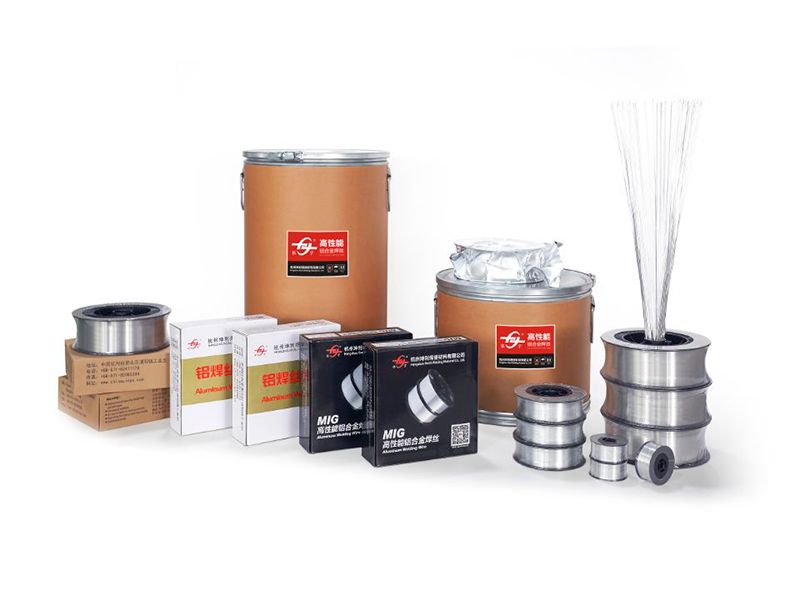The Future of Aluminum Welding: Why ER5183 Stands Out in Modern Fabrication
Understanding ER5183 Aluminum Welding Wire and Its Applications
As industries increasingly turn to lightweight yet durable materials, aluminum welding has become crucial in manufacturing and construction. Among various filler metals, ER5183 aluminum welding wire has gained significant attention for its exceptional properties. This 5XXX series wire contains magnesium as its primary alloying element, offering excellent strength and corrosion resistance.
1.1 Key characteristics of ER5183 welding wire
The chemical composition of ER5183 typically includes 4.3-5.2% magnesium, 0.05-0.25% manganese, and a maximum of 0.40% iron. This combination provides:
- Superior tensile strength compared to other aluminum wires
- Enhanced crack resistance during welding
- Better performance in marine environments
- Good ductility for various fabrication needs
1.2 Comparing ER5183 with other aluminum welding wires
When selecting welding wire, understanding differences is crucial. Below is a comparison between ER5183 and other common aluminum wires:
| Property | ER5183 | ER4043 | ER5356 |
|---|---|---|---|
| Tensile Strength | 40,000 psi | 29,000 psi | 38,000 psi |
| Corrosion Resistance | Excellent | Good | Very Good |
| Color Match After Anodizing | Fair | Excellent | Good |
| Recommended Base Metal | 5XXX series | 6XXX series | 5XXX/6XXX series |
Optimizing Your Welding Process with ER5183
Proper techniques are essential when working with ER5183 aluminum welding wire specifications. Unlike steel welding, aluminum requires specific considerations to achieve quality results.
2.1 Preparing for welding with ER5183
Surface preparation is critical when using ER5183 wire. Aluminum's oxide layer melts at a much higher temperature than the base metal, potentially causing inclusions. Follow these steps:
- Clean the base metal with a stainless steel brush dedicated to aluminum
- Use appropriate solvents to remove oils and grease
- Ensure all tools are free from steel contamination
- Preheat thick materials to 250°F (120°C) to reduce thermal shock
2.2 Ideal welding parameters for ER5183
The best gas for ER5183 aluminum welding is pure argon for most applications, though argon-helium mixtures can be beneficial for thicker materials. Typical settings include:
| Process | Wire Diameter | Amperage Range | Voltage Range | Gas Flow Rate |
|---|---|---|---|---|
| GMAW | 0.035" | 90-150A | 18-22V | 20-30 CFH |
| GMAW | 1/16" | 180-250A | 22-28V | 30-50 CFH |
| GTAW | 1/16" (filler) | 150-200A | 12-15V | 15-20 CFH |
Solving Common Challenges with ER5183 Welding Wire
While ER5183 vs ER5356 welding wire comparisons often highlight ER5183's advantages, users should be aware of potential challenges and their solutions.
3.1 Addressing porosity issues
Porosity is a common problem in aluminum welding. With ER5183, these factors often contribute:
- Moisture contamination (in gas or on materials)
- Improper shielding gas coverage
- Contaminated filler wire
- Excessive travel speeds
Solutions include using fresh wire, proper gas coverage, and ensuring complete dryness of all materials.
3.2 Managing crack sensitivity
Although ER5183 has good crack resistance, certain conditions can increase risk:
- High restraint joints
- Excessive dilution with base metal
- Improper joint design
Using proper ER5183 welding wire storage techniques (sealed containers with desiccant) helps maintain wire quality and reduce cracking tendencies.
Advanced Applications of ER5183 Welding Wire
The unique properties of ER5183 make it ideal for specialized applications beyond general fabrication.
4.1 Marine and offshore applications
ER5183's exceptional corrosion resistance in saltwater environments makes it perfect for:
- Boat hull construction and repair
- Offshore platform components
- Marine piping systems
- Coastal structural applications
4.2 Cryogenic applications
Unlike many materials that become brittle at low temperatures, ER5183 maintains its mechanical properties, making it suitable for:
- LNG storage tanks
- Cryogenic piping
- Spacecraft components
- Superconducting magnet structures
Maintaining Quality with ER5183 Welding Wire
Proper handling and ER5183 welding wire storage practices are essential to preserve the wire's performance characteristics.
5.1 Storage best practices
Aluminum welding wire is particularly sensitive to environmental conditions. Follow these guidelines:
- Store in original packaging until use
- Maintain storage area at consistent temperature (40-80°F)
- Keep relative humidity below 50%
- Use sealed containers with desiccant for opened spools
- Implement first-in, first-out inventory rotation
5.2 Handling procedures
Proper handling prevents contamination that could affect weld quality:
- Wear clean gloves when handling wire
- Avoid touching wire with bare hands
- Clean feed systems regularly
- Use dedicated liners for aluminum wire
- Inspect wire for oxidation or damage before use
By understanding these comprehensive aspects of ER5183 aluminum welding wire, welders and fabricators can achieve superior results in their aluminum joining applications, particularly where strength and corrosion resistance are paramount.
NEXT:Why Kunliwelding ER5087 Aluminum Welding Wire is the Choice for Demanding Industries
Related Products
-
 View More
View More
5154 Aluminum Alloy Welding Wire
-
 View More
View More
ER4043 Silicon Aluminum Welding Wire
-
 View More
View More
ER4047 Aluminum Mig Welding Wire
-
 View More
View More
ER5154 Al-Mg Alloy Wire
-
 View More
View More
ER5087 Magnesium Aluminum Welding Wire
-
 View More
View More
Aluminum Welding Wire ER5183
-
 View More
View More
ER5356 Aluminum Welding Wire
-
 View More
View More
ER5554 Aluminum Welding Wire
-
 View More
View More
ER5556 Aluminum Welding Wire
-
 View More
View More
ER1100 Aluminum Welding Wire
-
 View More
View More
ER5754 Aluminum Welding Wire
-
 View More
View More
ER2319 Aluminum Welding Wire
 English
English Deutsch
Deutsch
 English
English Deutsch
Deutsch


